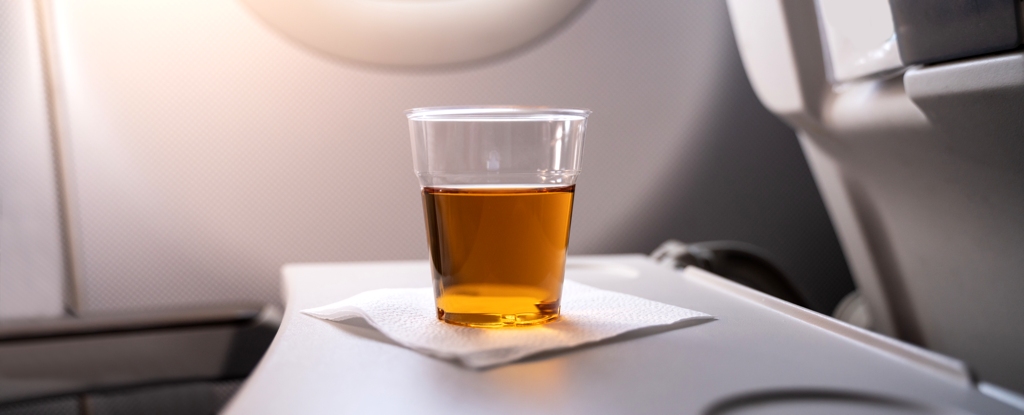The next time you’re on a long-haul flight, you might want to think twice about taking a drink and a nap: it’s a combination that could be putting your heart under extra pressure, according to a new study.
A team from the Institute of Aerospace Medicine at the German Aerospace Center split 40 volunteers between two sleep lab chambers: one at a normal ground level pressure, and one with artificially engineered pressure designed to mimic an airplane cruising at 2,438 meters (or around 8,000 feet).
We know that at these higher altitudes, with oxygen at a premium, blood oxygen levels (SpO2) begin to drop – technically known as hypobaric hypoxia. What this new research shows is that together with alcohol and a snooze, it’s a potentially dangerous mix.
“This study is the first to investigate the combined impact of hypobaric hypoxia and alcohol during sleep,” write the researchers in their published paper.
“We show that the on-board consumption of alcohol is an underestimated health risk that could be easily avoided.”
There were four groups in total: those sleeping at normal pressure with or without having had a drink, and those sleeping at cabin pressure with or without having had a drink.
The alcohol given to participants was the equivalent of two cans of beer or two glasses of wine. During the experiments, participants were limited to sleeping four hours in a night, presumably to mimic the experience of disrupted sleep during flights.
At normal pressure, the average individual who consumed alcohol had a blood oxygen level of 94.97 percent and a heart rate of 76.97 beats-per-minute (bpm). Those who did not have alcohol at normal pressure had a blood oxygen level of 95.88 percent and 63.74 bpm. At the reduced pressure, the equivalent stats were 85.32 percent SpO2 and 87.73 bpm for drinkers, and 88.07 percent SpO2 and 72.90 bpm for non-drinkers.
Together, the findings suggests that at airplane cabin conditions, blood oxygen was lower and heart rate higher than in the control group, and those impacts were even greater among those who consumed alcohol.
That’s a significant difference both for being high up in the air and for drinking – the healthy clinical norm for SpO2 is 90 percent. These factors also reduced time spent in deep and REM sleep, which are both important for sleep quality.
A low SpO2 and a high heart rate puts extra strain on the cardiovascular system, and the worry is that our long-haul flight habits are unnecessarily increasing the risk of heart problems – especially for those with existing conditions.
The study had a very small sample size, and participants were all young and healthy individuals. The shift in stats for the elderly and more vulnerable might be even more pronounced, which is something that future research can look into.
Of course it’s tempting to have a small tipple and a snooze when you’re heading away on vacation (or coming home after a stressful business trip), but the researchers are urging travelers to be more cautious in the future.
“Public awareness of this topic should be raised through patient charities, public campaigns and written health advice of airlines,” write the researchers. “Technical and economic constraints make it unlikely that an increase in cabin pressure will be implemented by airlines.”
The research has been published in Thorax.












/https://tf-cmsv2-smithsonianmag-media.s3.amazonaws.com/filer_public/34/31/3431771d-41e2-4f97-aed2-c5f1df5295da/gettyimages-1441066266_web.jpg)






Discussion about this post